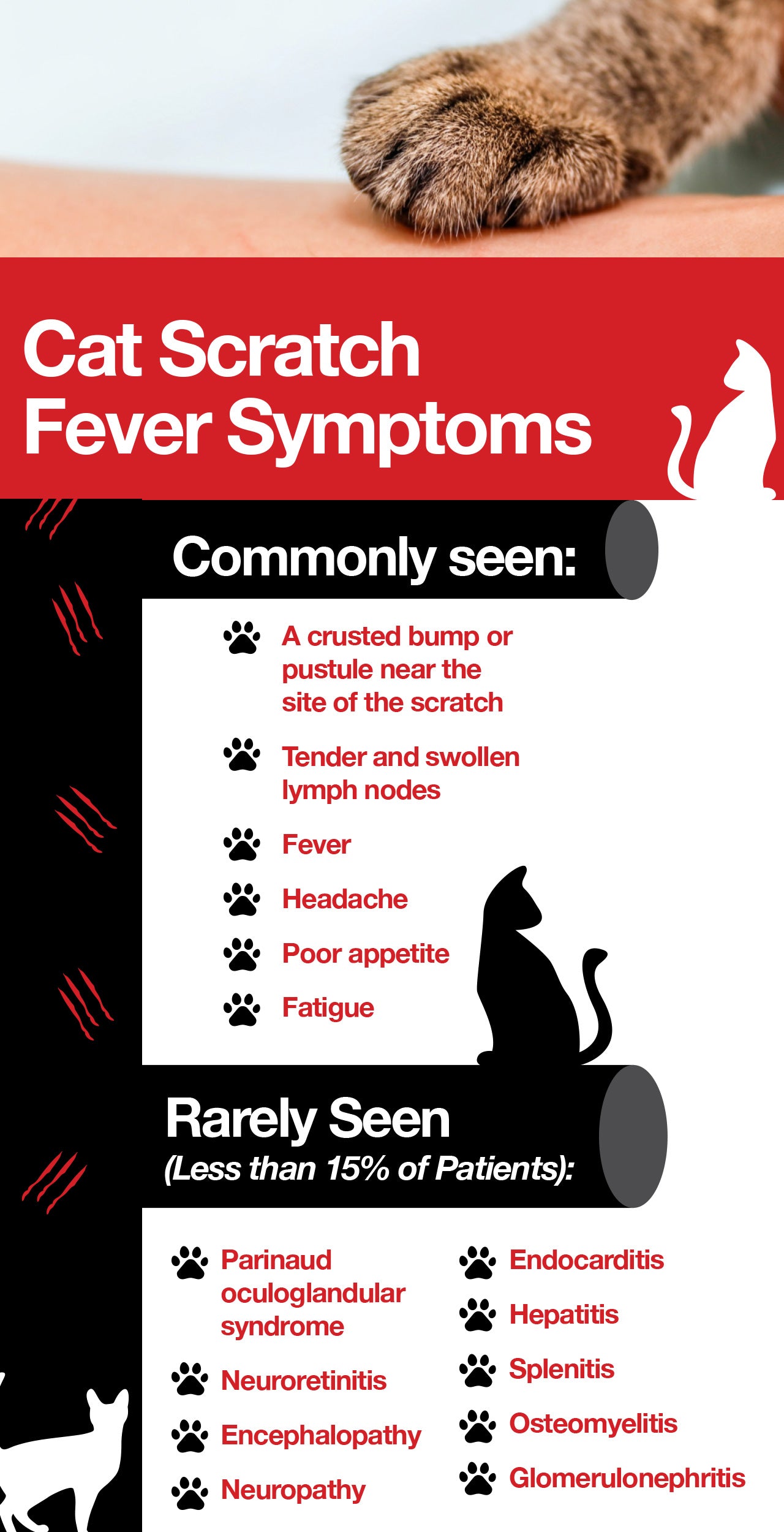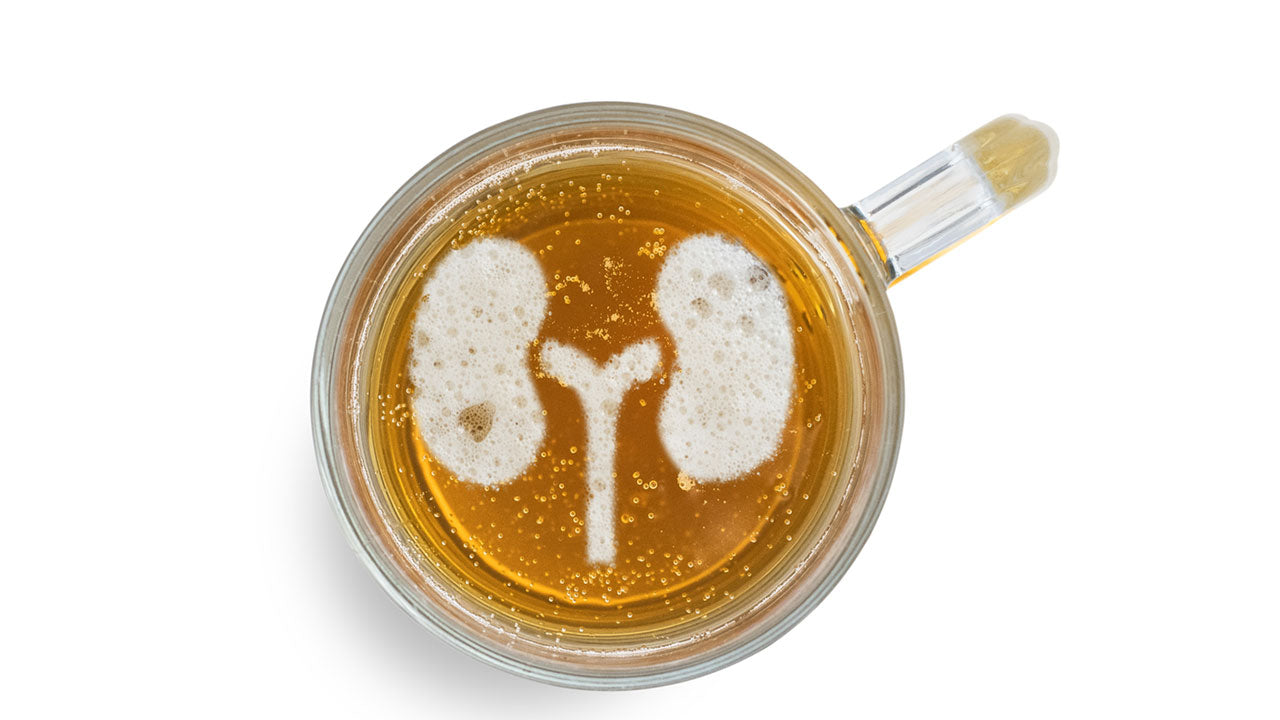What in the World Is Cat Scratch Fever?
 By: by Amino Science
By: by Amino Science

Cat scratch fever is more than just a rock song from the ’70s. It’s also a potentially serious bacterial infection that can lead to a number of unpleasant side effects. And, strangely enough, you can contract the illness from your very own house cat.
What Causes Cat Scratch Fever?
Cat scratch fever—which is also known by the monikers Teeny’s disease, inoculation lymphoreticulosis, subacute regional lymphadenitis, and cat scratch disease—is an infectious disease caused by the bacterium Bartonella henselae (B. henselae) that’s transmitted to humans via cat bites and scratches.
While the majority of cats don’t carry the disease, they may become infected when scratching or biting at fleas that carry the bacteria. Cats can then pass the infection on to humans via flea droppings under their nails, between their teeth, or in their saliva.
According to the Centers for Disease Control and Prevention (CDC), the chances of contracting cat scratch fever are actually quite slim, with only around 12,000 cases diagnosed each year in the United States. However, among those diagnosed, approximately 500 require hospitalization.
Do Cats Get Cat Scratch Fever?
Although the CDC estimates that approximately 40% of cats carry B. henselae at some point in their lives, most never show any signs of infection. However, some cats do develop symptoms. As is the case in humans, they’re generally mild and may include:
- Swollen lymph nodes
- Fever
- Lethargy
- Lack of appetite
- Vomiting
However, like humans, cats may also develop complications that affect the heart, mouth, urinary tract, or eyes. If signs of these complications appear—especially labored breathing—veterinary care should be sought.
Risk Factors for Cat Scratch Fever
Most cases of cat scratch fever in the United States occur from Maryland south and west to Texas between the months of September and January. The condition is also more commonly seen in women than men.
However, the majority of cases are diagnosed in children between the ages of 5 and 9—probably as a result of their tendency to engage in rough play with kittens, which have a greater tendency to bite and scratch as they play.
Most people who develop cat scratch fever experience relatively mild symptoms, though individuals with certain pre-existing medical conditions have a greater chance of becoming seriously ill from the disease. People most at risk are those with conditions that result in immune compromise, such as:
- Cancer
- Human immunodeficiency virus (HIV)
- Acquired immunodeficiency syndrome (AIDS)
- Organ transplantation
- Diabetes
Cat Scratch Fever Symptoms
If you’ve suffered a cat scratch or bite and are concerned about cat scratch fever, keep an eye out for these common signs of illness:
- A crusted bump or pustule near the site of the scratch
- Tender and swollen lymph nodes
- Fever
- Headache
- Poor appetite
- Fatigue
The first sign that someone’s been infected with B. henselae is a small pimple or bump at the site of the injury. Over the course of the next few weeks, the lymph nodes in the affected area then become swollen. This regional lymphadenopathy, as it’s known, may also be accompanied by tenderness of the affected lymph nodes.
Although cat scratch fever is an uncommon disease that’s usually mild and self-limited in nature, in rare cases, serious complications involving the heart, eyes, kidneys, liver, spleen, bones, brain, or nervous system may result.
Such cases are more likely to occur in children younger than 5 years and people with weakened immune systems and may require intensive treatment. Some of these complications include:
- Parinaud oculoglandular syndrome, or conjunctivitis that usually affects only one eye and is accompanied by swollen preauricular lymph nodes (those in front of the ears)
- Neuroretinitis, or inflammation of the retina and optic nerve
- Encephalopathy, or altered mental status due to brain disease
- Neuropathy, or dysfunction of the peripheral nerves
- Endocarditis, or infection of the inner lining of the heart chambers and valves
- Hepatitis, or inflammation of the liver
- Splenitis, or inflammation of the spleen
- Osteomyelitis, or infection of the bone
- Glomerulonephritis, or inflammation of the kidneys
Diagnosing Cat Scratch Fever
The majority of cases of cat scratch fever are diagnosed based on history and clinical symptoms. However, if symptoms are severe and your health care provider suspects the disease, several tests may be performed:
- Indirect immunofluorescence assay (IFA)
- Enzyme-linked immunosorbent assay (ELISA)
- Polymerase chain reaction (PCR)
IFA and ELISA are blood tests that look for antibodies to the bacteria that cause cat scratch fever. While these tests are the most sensitive to the disease, they’re less specific than PCR and may produce both false-negative and false-positive results. In cases where the results are ambiguous, the more specific PCR may be recommended to confirm the diagnosis.
Treating Cat Scratch Fever
Most people with cat scratch fever require minimal to no treatment, with symptoms generally subsiding on their own over the course of 2 to 4 months. However, if treatment is required, it’s usually in the form of local heat and analgesics for pain.
In those with extremely large and fluctuant lymph nodes, needle aspiration may be used for pain relief purposes, while antibiotics are generally only recommended in patients who develop signs of severe or systemic disease.
Moreover, because the disease is not spread from person to person, extra precautions to prevent transmission of the infection to others are not required.
Preventing Cat Scratch Fever
To help reduce your chances of getting cat scratch fever from your cat, follow these simple precautions:
- Wash any cat bite or scratches with soap and water.
- Wash your hands after playing with your cat.
- Avoid rough play with your cat.
- Don’t allow your cat to lick an open wound.
- Keep your cat’s nails trimmed.
- Control fleas both on your cat and in your home.
- Schedule regular health checkups with your vet.
- Keep your immune system strong with essential amino acids.
In addition, it’s best to avoid petting stray or feral cats, and people who are immunocompromised should avoid adopting kittens younger than 1 year.
Taking these simple steps to avoid the situations that may result in cat scratch fever will not only help prevent the disease in you but will also help protect your cat from potential infection. However, if you or your cat develops signs of infection that are worrisome, see your health care provider or vet to discuss further treatment options.


Up to 25% off Amino
Shop NowTAGS: conditions
Join the Community
Comments (0)
Most Craveable Recipes




 833-264-6620
833-264-6620



















